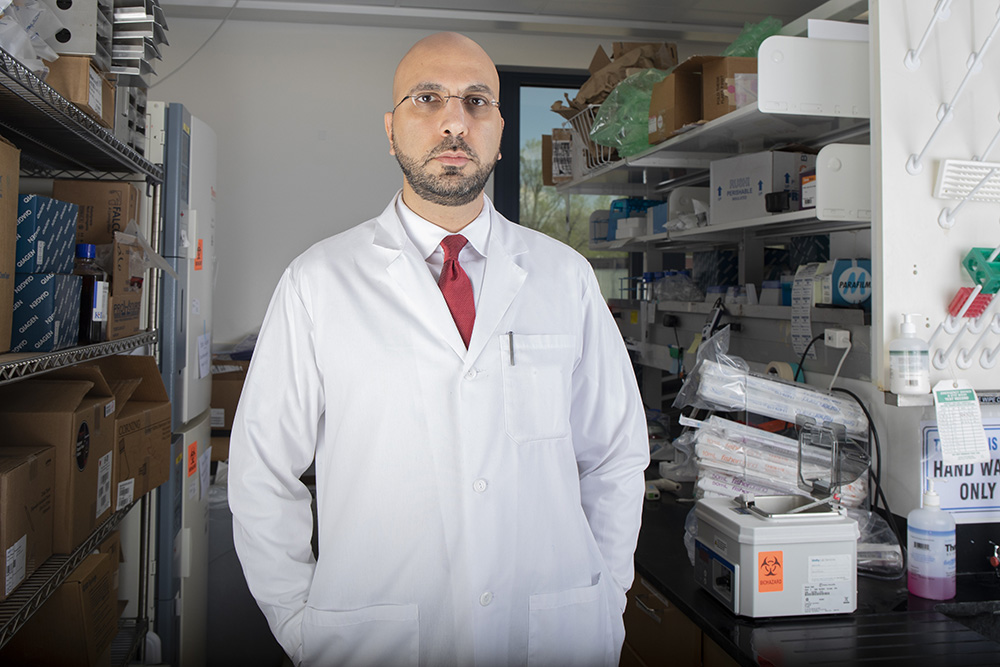The U.S. Army Medical Research and Development Command (MRDC), a subordinate command of U.S. Army Futures Command, will host a presentation on preparedness for future pandemics during this month’s annual Association of the U.S. Army (AUSA) meeting in Washington, D.C.
The presentation, “Preparing for Future Pandemics: Detect, Prevent, Treat,” will take place on October 12 and feature Brig. Gen. Anthony McQueen, commanding general of MRDC and Fort Detrick, Maryland, and Dr. Kayvon Modjarrad, director of the Emerging Infectious Diseases Branch at MRDC’s Walter Reed Army Institute of Research (WRAIR).
“The world has learned that emerging viruses like COVID-19 are one of the reasons a global network of military infectious disease laboratories exists,” McQueen said in remarks prior to AUSA. “The world has also learned how vital MRDC assets are to national security.”
MRDC has made substantial contributions to the U.S. federal government’s ongoing COVID-19 response, and is working diligently to apply lessons learned to future pandemic preparedness and response.
During the early days of the COVID-19 pandemic, MRDC scientists received samples of the unfamiliar virus and were eventually able to replicate it safely, contributing to efforts to better understand and combat its effects.
The command also worked on convalescent plasma and monoclonal antibodies research, both of which were important for assessing how to help affected individuals recover from the life-threatening disease.
MRDC additionally established the Additive Manufacturing Working Group, which ultimately became integral in procuring and producing a substantial amount of personal protective equipment during a time when such items were in short supply within the Department of Defense.

Dr. Kayvon Modjarrad, director of the Emerging Infectious Diseases Branch at the U.S. Army Medical Research and Development Command’s Walter Reed Army Institute of Research. (Michael Walters, WRAIR Public Affairs)
In looking toward a future that could present additional previously unknown diseases that pose significant harm to human health, MRDC is pioneering a diagnostic capacity called Biodefense Mass Sequencing and Surveillance, which enables large formation testing for COVID-19 – and potentially other diseases – with a rapid turnaround time and individual sample results.
Meanwhile, WRAIR is developing a unique vaccine platform designed to combat COVID-19. The vaccine candidate – dubbed “SpFN” (short for “spike ferritin nanoparticle,” and pronounced “spiff-in,” according to Modjarrad) – was developed internally at WRAIR and is currently involved in Phase 1 clinical trials. The vaccine employs ferritin, a protein found in almost all living organisms. By attaching a certain type of spike protein to a polymerized version of ferritin, WRAIR scientists hope the resulting vaccination dose will block COVID-19 infection.
WRAIR is also studying so-called “virus families,” in the hope that they can provide greater insights into how to stymie disease spread and strengthen pandemic response.
“We’ve learned quite a bit about the structure of the viruses, the life-cycle of the viruses and our immune responses to those viruses,” said Modjarrad. “We have the tools and the technology and the knowledge base now to develop these broad platforms – these vaccines and treatments – for families of viruses.”
MRDC will also participate in an AUSA Contemporary Military Forum, “Lessons Learned from Army’s Pandemic Response: Accelerating All-of-Nation Response,” on Oct. 13. During the forum, MRDC Command Sgt. Maj. Victor Laragione will highlight MRDC’s global footprint and planned global health efforts, as well as the command’s recent achievements in the field of telehealth. Other panelists include U.S. Surgeon General Vice Adm. Vivek Murthy.
MRDC’s Office of Research and Technology Applications will also appear in the Warriors Corner section to discuss ongoing efforts and internal capabilities, and personnel from MRDC’s U.S. Army Medical Materiel Development Activity will attend the event to promote the Medical Hands-free Unified Broadcast tool, an innovative communication platform developed to share patient information between medics and hospitals during medical evacuations.
AUSA 2021 will be livestreamed to registered participants here.





